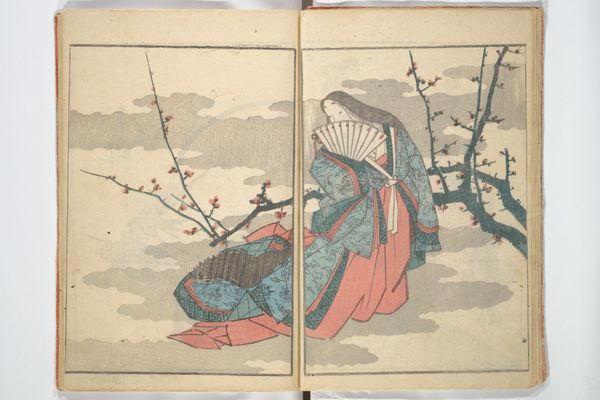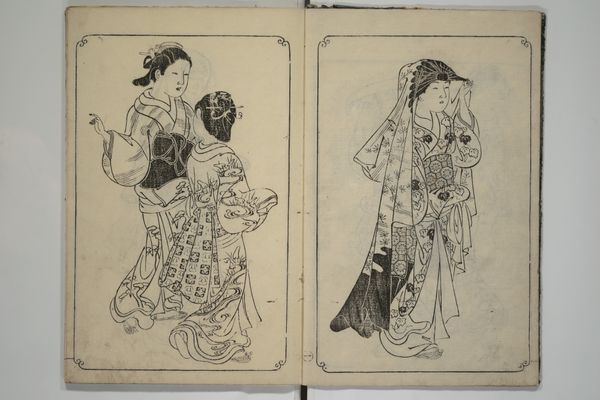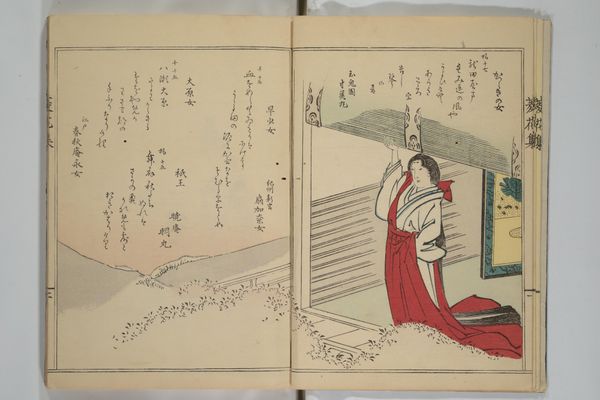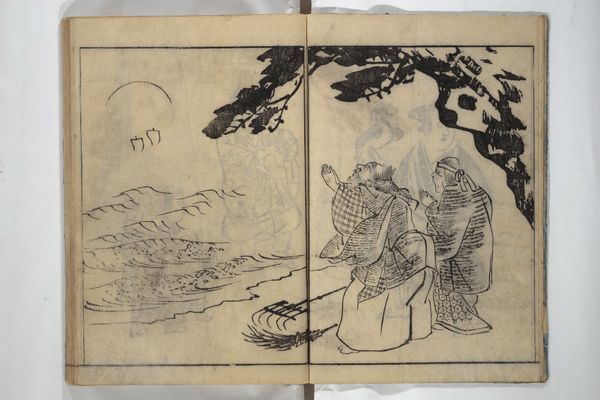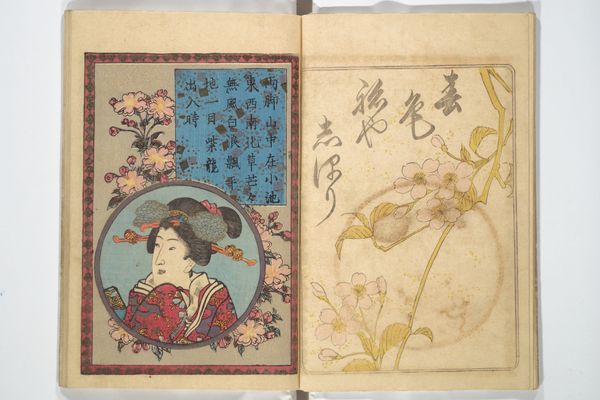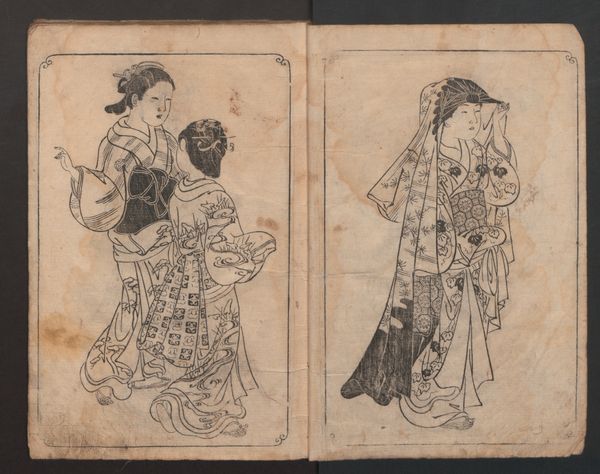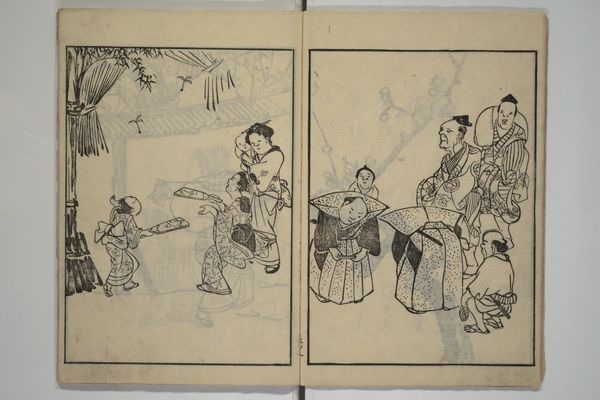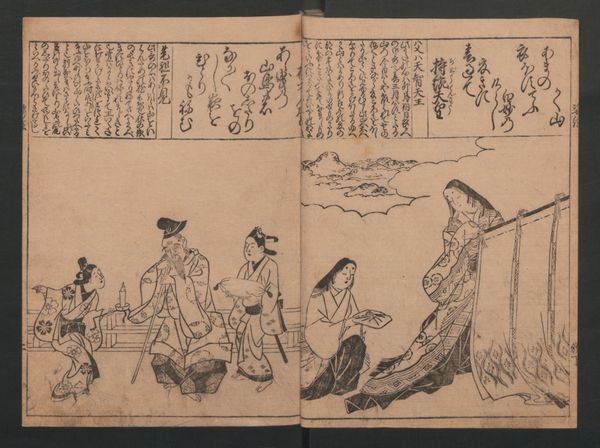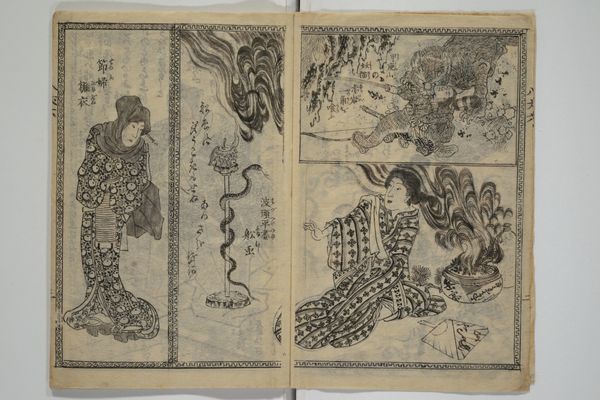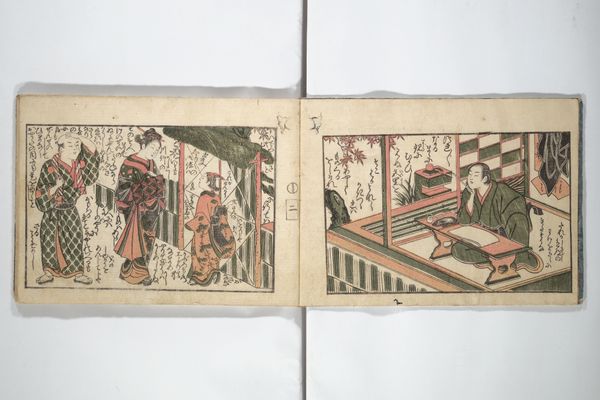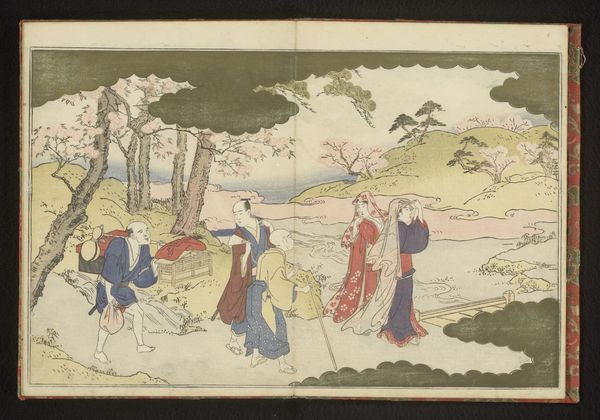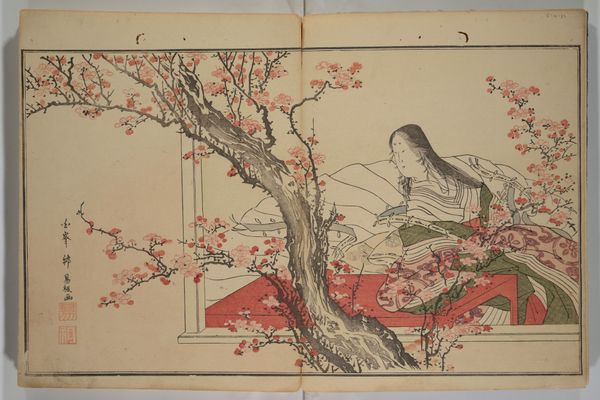
print, woodblock-print
#
portrait
# print
#
asian-art
#
sketch book
#
landscape
#
ukiyo-e
#
figuration
#
woodblock-print
Dimensions: 9 13/16 × 7 1/16 in. (25 × 18 cm)
Copyright: Public Domain
Editor: This is an interesting spread from Rankō's "Album of the Phoenix Bird," a woodblock print from 1806. There’s a stillness about it, almost like a staged tableau vivant. What stands out to you when you look at it? Curator: The figures’ veils and averted gazes certainly contribute to that stillness. We can see it in dialogue with societal restrictions placed upon women in 19th century Japan. Notice the contrast: the delicate beauty of the landscape is juxtaposed with the figures, who are shrouded and somewhat anonymous. To me, that contrast evokes questions about visibility, agency, and the complexities of female experience during that period. What do you think about the figures concealing their faces? Editor: That’s a good point, it could signify a lack of agency but I had assumed they were more protected than oppressed, their bodies obscured as if they are in possession of sacred knowledge that should not be viewed by the public eye. Curator: It’s possible to interpret it in multiple ways, and that tension is powerful! How does the landscape function within your "protected knowledge" interpretation? Editor: The peach trees in bloom perhaps serve as a visual metaphor of ephemeral beauty or the coming of spring? Almost to reinforce the message that one thing might seem one way now, but change and revolution is constantly on the horizon, we simply cannot see it yet? Curator: Exactly. Placing the artwork within socio-political and intellectual currents deepens our understanding, yes? Thinking about class structures, gender roles, and the ever-changing socio-political environment invites fresh perspectives. It asks: Whose voices are represented and whose are absent? Editor: I can definitely see it now, what at first looked like a fairly unassuming portrait reveals hidden commentary and speaks to themes which are ever-present within society today. Curator: And it highlights how art can function as both a mirror and a window – reflecting social realities while also offering glimpses into alternative futures.
Comments
No comments
Be the first to comment and join the conversation on the ultimate creative platform.
